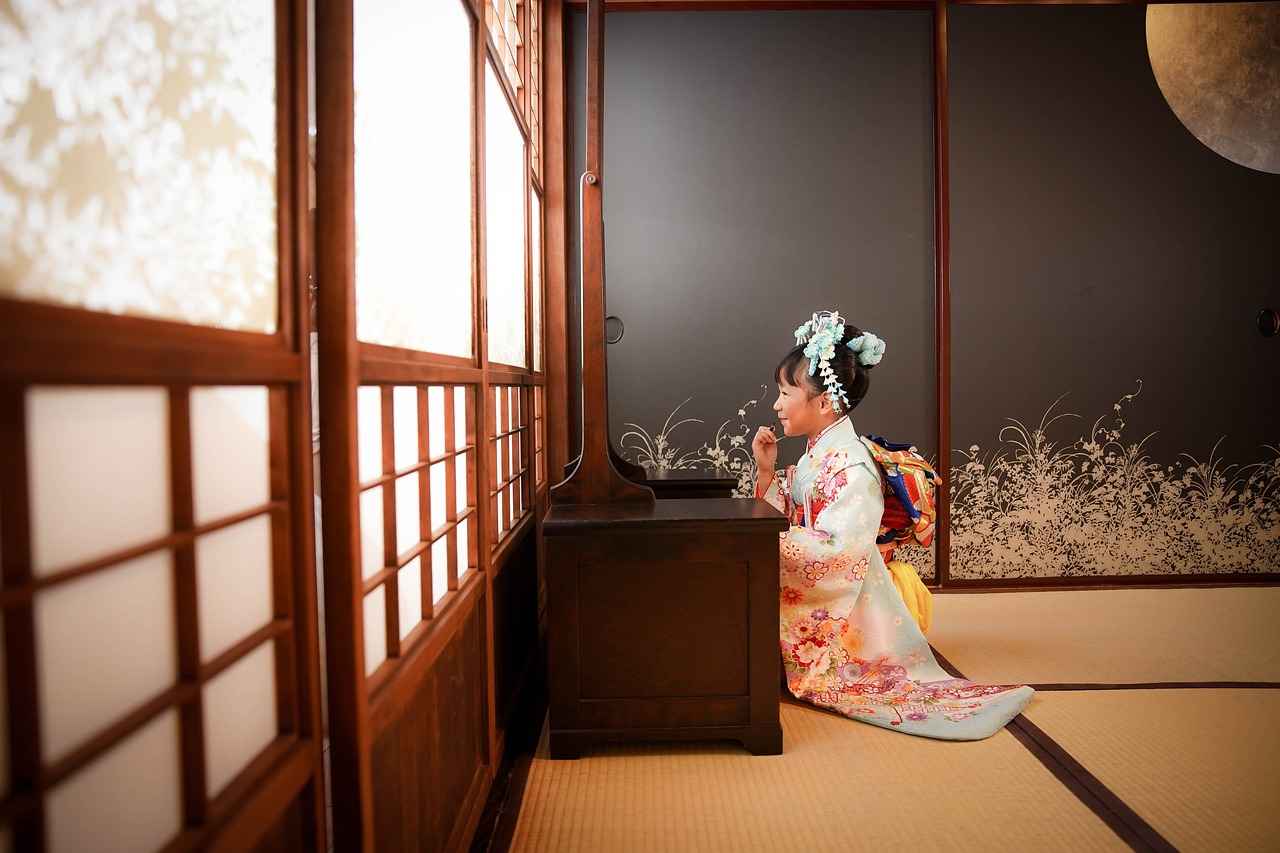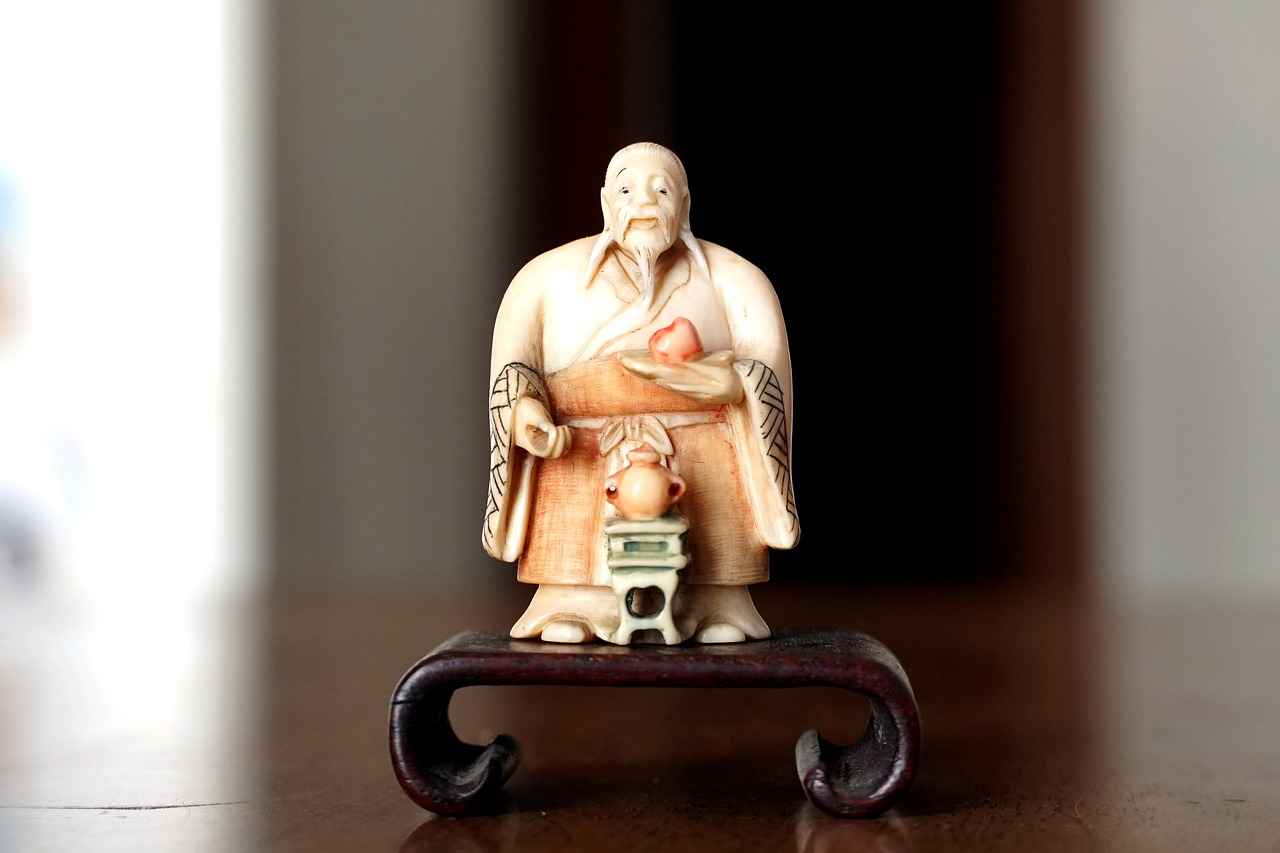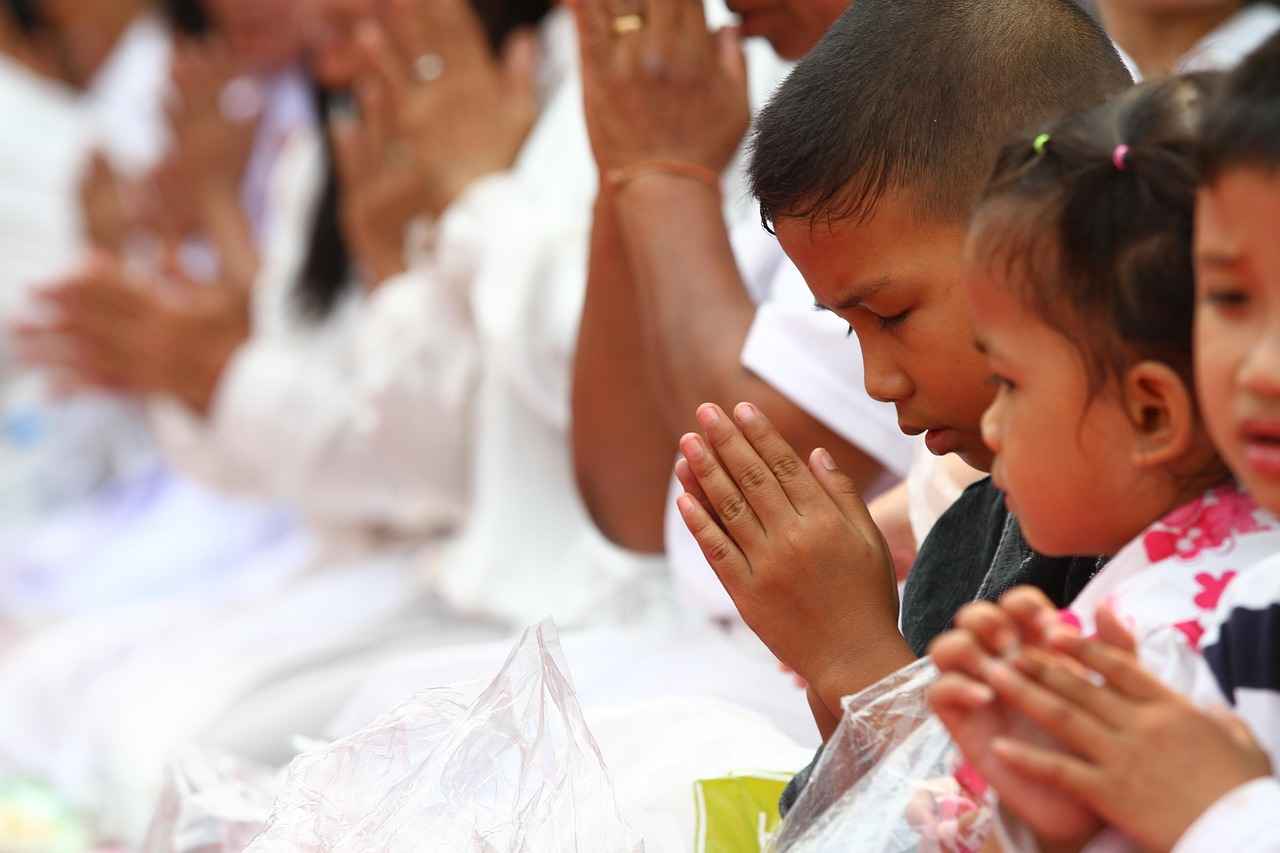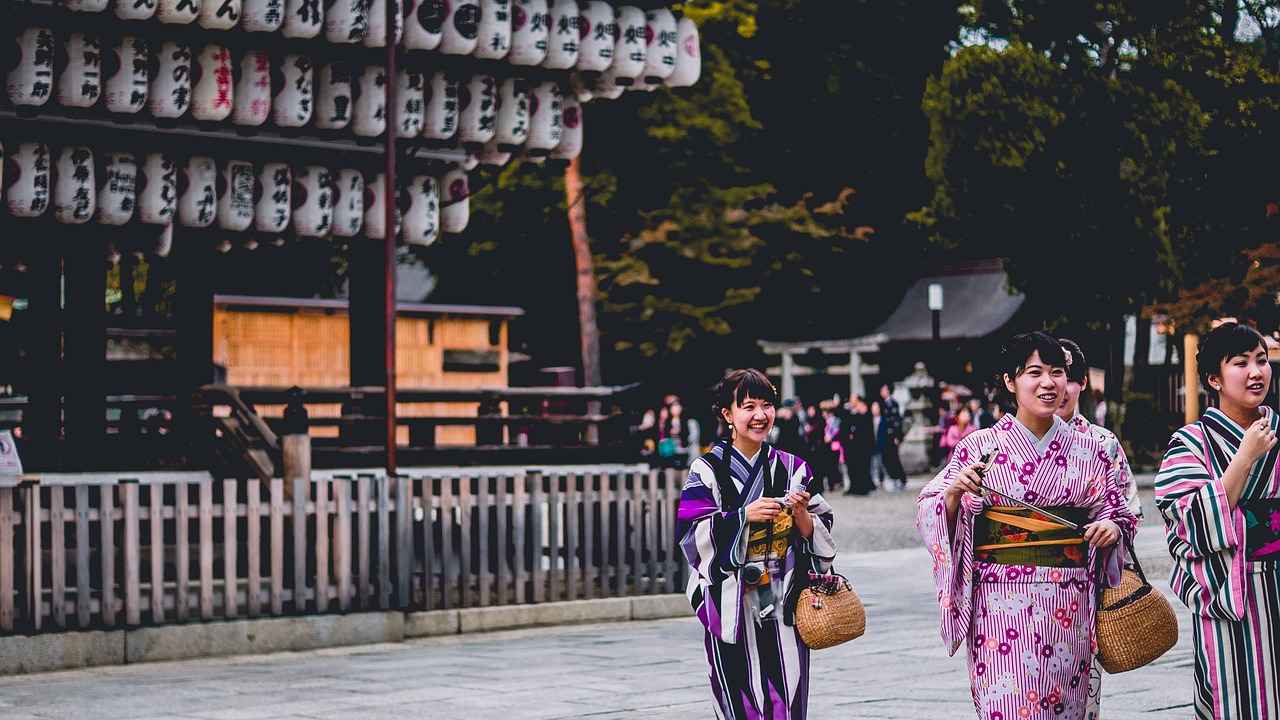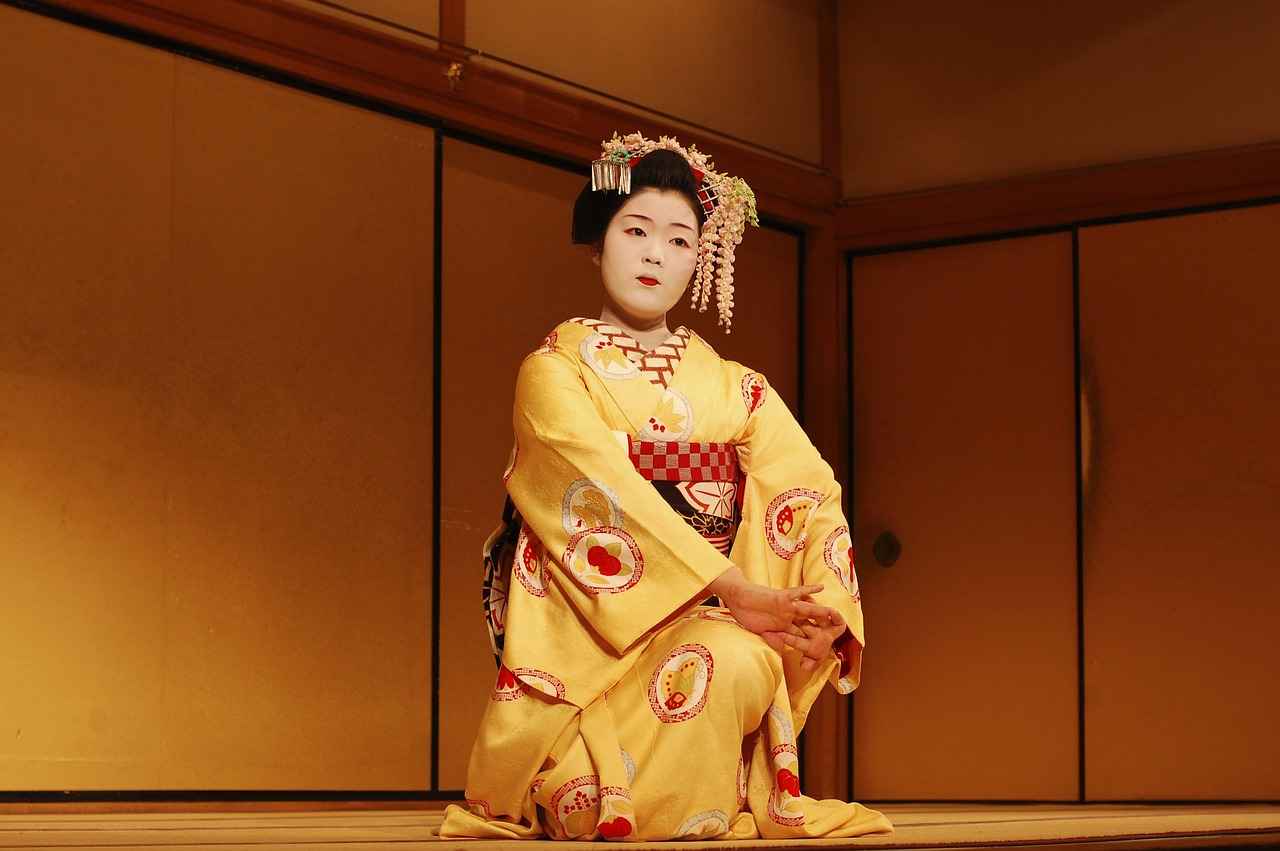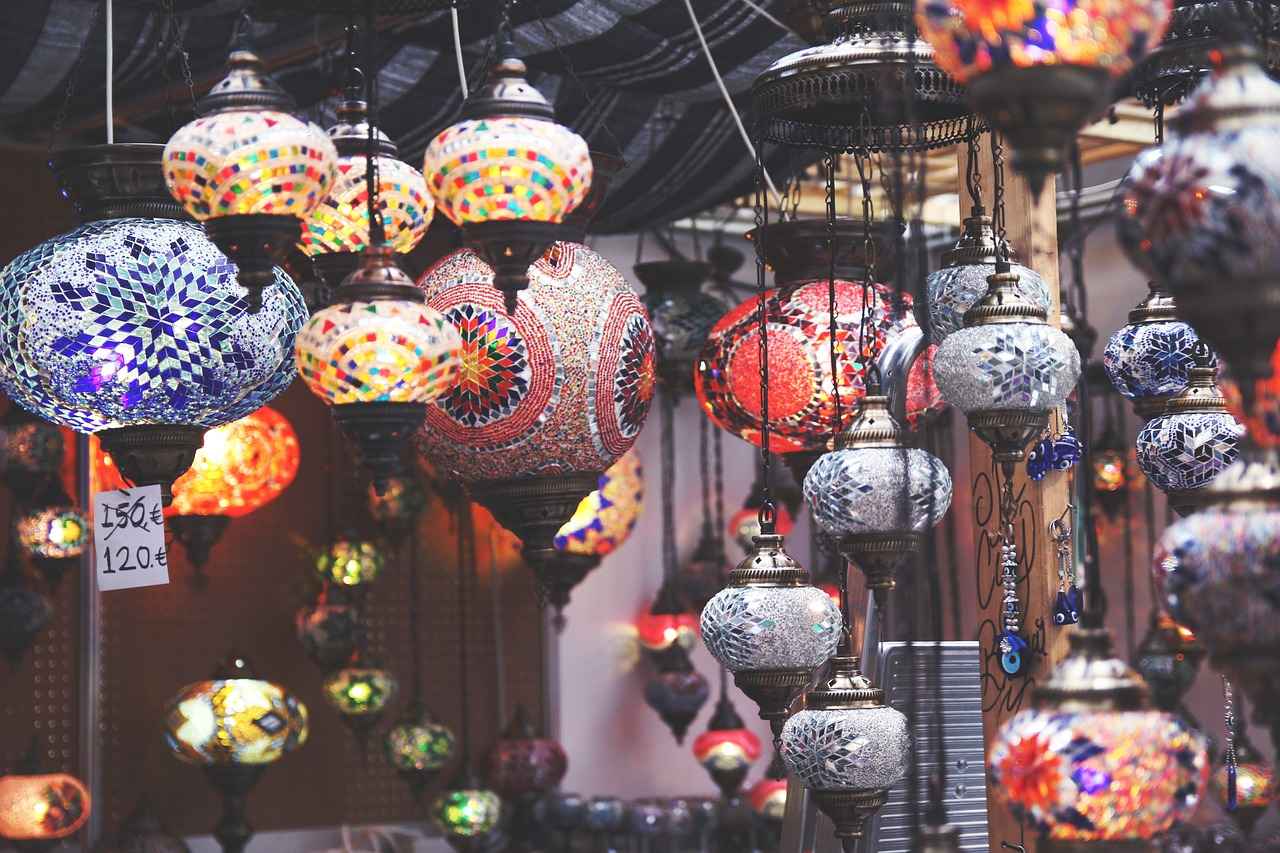This article delves into the rich history, cultural significance, and diverse styles of the kimono, Japan’s iconic traditional garment. By exploring its evolution, various types, and appropriate ways to wear it, readers will gain a comprehensive understanding of this beautiful attire.
The History of Kimono
The kimono boasts a long and intricate history, tracing its roots back to ancient Japan. Initially influenced by Chinese clothing styles, the kimono has undergone significant transformation over centuries. Today, it stands as a symbol of Japanese culture and identity, reflecting the nation’s artistic heritage.
Types of Kimono
- Formal Kimonos: These are worn during significant events such as weddings and ceremonies. They are recognized for their elaborate designs and premium fabrics, showcasing the wearer’s status.
- Casual Kimonos: Designed for everyday wear, these kimonos offer comfort while allowing individuals to embrace traditional aesthetics in a relaxed manner.
Materials Used in Kimono
- Silk: Renowned for its luxurious feel and sheen, silk kimonos are often worn on formal occasions.
- Cotton: Popular for casual wear, cotton kimonos are breathable and comfortable, making them ideal for summer festivals.
How to Wear a Kimono
Wearing a kimono involves specific techniques and accessories that enhance its beauty. Essential items like obi (belts) and obijime (cords) play a crucial role in completing the look.
The Cultural Significance of Kimono
The kimono embodies deep cultural significance in Japan, representing tradition, identity, and social status. Its role in society enriches the appreciation for this exquisite garment.
Modern Adaptations of Kimono
In recent years, the kimono has experienced a revival, with contemporary designers reinterpreting this traditional attire. These adaptations often blend modern fashion with classic elements, appealing to a new generation.
Conclusion: Embracing the Kimono Today
The kimono remains a powerful symbol of Japanese culture, merging tradition with modernity. By understanding its significance and styles, one can appreciate this timeless garment and its place in contemporary fashion.

The History of Kimono
The kimono is not just a garment; it is a symbol of Japanese culture with a history that spans centuries. Its evolution from ancient clothing to a modern cultural icon reflects the rich tapestry of Japan’s social and artistic heritage. Understanding the origins of the kimono provides valuable insights into its significance in contemporary Japanese society.
Initially, the kimono emerged during the Heian period (794-1185) as a simple, practical garment. However, as time progressed, it transformed into a more elaborate piece of clothing, adorned with beautiful patterns and vibrant colors. The Edo period (1603-1868) marked a significant turning point in kimono history, as the garment became a symbol of status and identity among the Japanese elite.
Throughout the years, the kimono has adapted to various cultural shifts, including the influence of Western fashion in the Meiji era (1868-1912). Despite these changes, the kimono has retained its essence, representing the spirit of Japan and its traditions. Today, it is worn during special occasions such as weddings, festivals, and tea ceremonies, showcasing its enduring relevance.
| Period | Characteristics |
|---|---|
| Heian Period | Simple, practical designs |
| Edo Period | Elaborate patterns, status symbol |
| Meiji Era | Western influence, adaptation |
In modern Japan, the kimono is not only a traditional garment but also a fashion statement. Designers are reinterpreting the kimono, incorporating contemporary styles while preserving its historical significance. This blend of old and new allows the kimono to thrive in today’s fashion landscape.
In conclusion, the kimono’s long and storied history is a testament to its importance in Japanese culture. By understanding its origins and evolution, one can appreciate the depth of meaning behind this iconic garment and its place in the heart of Japan today.

Types of Kimono
Kimonos are a quintessential part of Japanese culture, embodying a rich tapestry of history and tradition. They come in a variety of styles, each tailored for specific occasions and purposes. Understanding the different types of kimonos can enhance appreciation for this beautiful garment and inform choices for those looking to wear one.
Kimonos can be broadly categorized into two main types: formal and casual. Each type serves distinct functions and is characterized by unique designs and fabrics.
| Type | Description | Occasions |
|---|---|---|
| Formal Kimonos | Elaborate designs often made from luxurious fabrics. | Weddings, ceremonies, and formal events. |
| Casual Kimonos | Simple, comfortable designs suitable for everyday wear. | Festivals, casual outings, and home wear. |
Formal kimonos are typically worn during significant life events. They are designed to reflect the wearer’s status and the importance of the occasion. Common styles include:
- Furisode: A formal kimono for young unmarried women, featuring long sleeves and vibrant patterns. It symbolizes youth and is often worn during coming-of-age ceremonies.
- Tomosode: A kimono for married women, characterized by subtle designs and elegance, frequently worn at weddings and formal gatherings.
Casual kimonos are more relaxed and versatile, allowing individuals to embrace traditional aesthetics without the formality. They are perfect for:
- Summer festivals, where comfort is key.
- Everyday wear, providing a stylish yet comfortable option.
In summary, the variety of kimonos available reflects Japan’s rich cultural heritage. Whether for formal occasions or casual outings, each kimono type serves a unique purpose, allowing wearers to express their identity and appreciation for tradition.
Formal Kimonos
are an essential aspect of Japanese culture, worn during significant events such as weddings, tea ceremonies, and other formal gatherings. These garments are not merely clothing; they are a reflection of the rich traditions and values of Japan. The intricate designs and high-quality fabrics used in formal kimonos convey the wearer’s status and the importance of the occasion.
Typically crafted from luxurious materials like silk, formal kimonos feature elaborate patterns and colors that symbolize various meanings. For instance, colors like red and gold are often associated with happiness and prosperity, making them popular choices for weddings. The craftsmanship involved in creating these garments is remarkable, with skilled artisans spending countless hours on detailed embroidery and dyeing techniques.
One of the most recognized types of formal kimono is the furisode, which is characterized by its long sleeves and vibrant designs. This style is traditionally worn by young, unmarried women, especially during coming-of-age ceremonies. The furisode symbolizes youth and beauty, making it a popular choice for significant life events.
In contrast, the tomosode is tailored for married women and is often adorned with more subtle patterns. This type of kimono is typically worn at formal gatherings, showcasing the elegance and maturity of the wearer. The choice of kimono often reflects not only personal style but also adherence to cultural customs and traditions.
Moreover, wearing a formal kimono involves specific techniques and accessories, such as the obi (belt), which plays a crucial role in the overall appearance. Mastering the art of wearing a kimono enhances the beauty of the garment and the confidence of the wearer.
In summary, formal kimonos are not just garments; they are a celebration of Japanese culture and heritage. Whether worn during joyous occasions or solemn ceremonies, they represent a deep connection to tradition and identity, reminding us of the importance of preserving such beautiful practices in our modern world.
Furisode
Furisode: A Symbol of Youth and Elegance in Japanese Culture
The is a stunning formal kimono specifically designed for young unmarried women, characterized by its long sleeves and vibrant patterns. This traditional garment holds a special place in Japanese culture, often worn during significant life events such as coming-of-age ceremonies and weddings. The term “furisode” translates to “swinging sleeves,” reflecting the graceful movement of the long sleeves as the wearer walks.
Typically crafted from luxurious materials like silk, the furisode features intricate designs that can include floral motifs, seasonal themes, and symbolic patterns, each representing different aspects of Japanese aesthetics. The bold colors and elaborate craftsmanship not only enhance the beauty of the garment but also symbolize the wearer’s youth and vitality.
During seijin shiki (coming-of-age ceremonies), young women don the furisode to celebrate their transition into adulthood. This ceremony, which marks the age of 20 in Japan, is a significant cultural milestone, and wearing a furisode is a way for these women to express their newfound maturity and hope for the future. Similarly, at weddings, the furisode is often worn by brides or guests, signifying joy and festivity.
Accessorizing a furisode is equally important, with items such as the obi (belt) and obijime (decorative cord) playing crucial roles in completing the look. The way the obi is tied can also convey different meanings and levels of formality, making it an essential part of the ensemble.
In conclusion, the furisode is more than just a beautiful garment; it is a rich representation of Japanese culture, embodying the essence of youth, beauty, and tradition. Understanding its significance allows one to appreciate the deep-rooted customs and values that continue to thrive in modern Japan.
Tomosode
is a distinguished formal kimono specifically designed for married women, embodying both elegance and cultural significance. Unlike other kimonos, the tomosode is characterized by its subtle yet sophisticated designs, often featuring motifs that convey maturity and refinement. This garment is typically worn at important occasions such as weddings, formal gatherings, and ceremonies, making it a staple in the wardrobe of married women in Japan.
The tomosode is often made from high-quality fabrics, with silk being a popular choice due to its luxurious feel and appearance. The designs on a tomosode are generally more understated compared to the vibrant patterns found on kimonos worn by younger, unmarried women, such as the furisode. This distinction not only reflects the wearer’s marital status but also highlights a shift in aesthetic preferences that come with maturity.
One of the key features of the tomosode is its short sleeves, which differentiate it from other formal kimonos. The garment may be adorned with intricate embroidery or dyeing techniques, showcasing the artisan’s skill while maintaining a sense of elegance. Popular motifs include floral patterns, which symbolize beauty and grace, and seasonal themes that resonate with nature’s cycles.
Wearing a tomosode requires a certain level of expertise, as it involves specific techniques to ensure that the kimono drapes beautifully and fits comfortably. Accessories such as the obi (belt) and obijime (cord) play a crucial role in completing the look, providing both support and style. When properly worn, the tomosode not only enhances the wearer’s appearance but also serves as a statement of cultural pride and heritage.
In conclusion, the tomosode is more than just a garment; it is a reflection of a woman’s journey into maturity and elegance. Its rich history and cultural significance make it a cherished piece of traditional Japanese attire, continuing to be worn with pride at significant life events.
Casual Kimonos
are a delightful fusion of comfort and tradition, designed specifically for everyday wear and informal occasions. These garments enable individuals to express their appreciation for Japanese aesthetics without the formality required by traditional kimonos. With their relaxed fit and versatile styles, casual kimonos serve as a bridge between modern fashion and cultural heritage.
One of the most appealing aspects of casual kimonos is their versatility. They can be paired effortlessly with a variety of outfits, from casual jeans to elegant dresses. This adaptability makes them suitable for numerous settings, whether you’re attending a summer festival, enjoying a day out with friends, or simply lounging at home. The lightweight fabrics often used in their construction, such as cotton or linen, ensure that wearers stay comfortable throughout the day.
Moreover, casual kimonos come in a range of colors and patterns, allowing individuals to select styles that resonate with their personal taste. From vibrant floral designs to subtle, understated patterns, there is a casual kimono for every preference. This diversity not only reflects the rich cultural history of the kimono but also showcases modern interpretations that appeal to younger generations.
In addition to their aesthetic appeal, casual kimonos are also easy to maintain. Unlike their formal counterparts, which often require special care and handling, casual kimonos can usually be machine washed, making them a practical choice for everyday wear.
As the world becomes more interconnected, the popularity of casual kimonos continues to rise. They serve as a beautiful reminder of Japan’s rich cultural heritage while adapting to contemporary fashion trends. By embracing casual kimonos, individuals can enjoy the best of both worlds: the comfort of modern clothing and the elegance of traditional Japanese attire.

Materials Used in Kimono
Kimonos are not just garments; they are a representation of Japan’s rich cultural heritage. The materials used in crafting these traditional pieces play a crucial role in defining their aesthetic and functional qualities. This section delves into the most common fabrics utilized in kimono production, highlighting their unique characteristics and significance.
- Silk: Silk is the quintessential fabric for kimonos, celebrated for its luxurious feel and natural sheen. It is often used in formal kimonos, enhancing their elegance. The intricate weaving techniques employed, such as chirimen and tsumugi, create a stunning visual appeal. Silk kimonos are typically reserved for special occasions, showcasing the wearer’s status and sophistication.
- Cotton: Cotton kimonos are favored for their comfort and practicality, making them ideal for casual wear. They are lightweight and breathable, perfect for summer festivals and everyday activities. Unlike silk, cotton kimonos are easier to maintain, allowing for frequent use without the worry of delicate care.
- Rayon: Rayon is a synthetic fabric that mimics the softness of silk while being more affordable. It is often used in casual kimonos and is appreciated for its vibrant colors and patterns. Rayon kimonos offer a modern twist on traditional styles, making them accessible to a wider audience.
- Wool: Wool kimonos are less common but provide warmth and durability. They are typically worn during colder months and can feature beautiful patterns. The use of wool in kimonos reflects the versatility of this traditional garment, adapting to different climates and seasons.
- Polyester: Polyester kimonos have gained popularity due to their affordability and ease of care. They are often used for casual and everyday wear, allowing individuals to enjoy the kimono aesthetic without the high maintenance associated with silk.
Each fabric contributes uniquely to the overall experience of wearing a kimono, whether it be the luxurious feel of silk or the practicality of cotton. Understanding these materials not only enhances appreciation for the garment but also aids in selecting the right kimono for various occasions.
Silk
is widely regarded as the most luxurious fabric used in the creation of kimonos, a traditional Japanese garment known for its elegance and cultural significance. The unique properties of silk contribute to its esteemed status, making it the fabric of choice for formal occasions.
Characterized by its softness and sheen, silk enhances the overall aesthetic of kimonos, allowing them to drape beautifully on the wearer. This fabric is often associated with formal kimonos, which are worn during significant events such as weddings, tea ceremonies, and other ceremonial occasions. The use of silk in these garments not only elevates their beauty but also reflects the wearer’s status and the importance of the event.
Moreover, silk kimonos are often adorned with intricate patterns and designs that showcase traditional Japanese artistry. These designs can include floral motifs, geometric patterns, and seasonal themes, all of which are carefully crafted to tell a story or convey a message. The vibrant colors and delicate textures of silk further enhance these artistic elements, making each kimono a unique work of art.
In addition to its visual appeal, silk is also valued for its breathability and temperature regulation, making it comfortable to wear in various climates. This versatility is particularly beneficial during formal events, where comfort is essential for enjoying the occasion.
While silk kimonos are often seen as the epitome of elegance, they do require careful maintenance to preserve their quality. Regular cleaning and proper storage are crucial to prevent damage and ensure that these exquisite garments remain in pristine condition for years to come.
In conclusion, silk is not just a fabric; it is a symbol of luxury, tradition, and artistry in the world of kimonos. Its unique qualities and cultural significance continue to make it a cherished choice for formal attire in Japan, embodying the rich heritage of this iconic clothing.
Cotton
kimonos have gained immense popularity in recent years, particularly for casual wear. Their appeal lies in their comfort and breathability, making them an excellent choice for various informal occasions. Unlike their silk counterparts, cotton kimonos are not only easier to maintain but also offer a more relaxed fit, allowing wearers to enjoy traditional Japanese aesthetics without sacrificing comfort.
These kimonos are particularly favored during summer festivals, where the warm weather calls for lightweight clothing. The breathable nature of cotton fabric helps keep the wearer cool, making it an ideal choice for outdoor events. Additionally, the vibrant colors and patterns often found in cotton kimonos add a festive touch, enhancing the overall experience of the celebrations.
In terms of maintenance, cotton kimonos are significantly more practical than silk kimonos. They can be easily washed and dried, which is a considerable advantage for those who wear them frequently. This practicality doesn’t compromise their aesthetic appeal; many cotton kimonos feature beautiful prints and designs that reflect traditional Japanese art.
Moreover, cotton kimonos are versatile. They can be dressed up or down depending on the occasion. Pairing them with accessories like a stylish obi or casual sandals can create a chic look suitable for a variety of settings, from casual outings to more festive gatherings.
In conclusion, cotton kimonos represent a perfect blend of tradition and modern practicality. They allow individuals to embrace Japanese culture while enjoying the benefits of comfort and ease of care. Whether you’re attending a summer festival or simply looking for a comfortable outfit, a cotton kimono is an excellent choice.
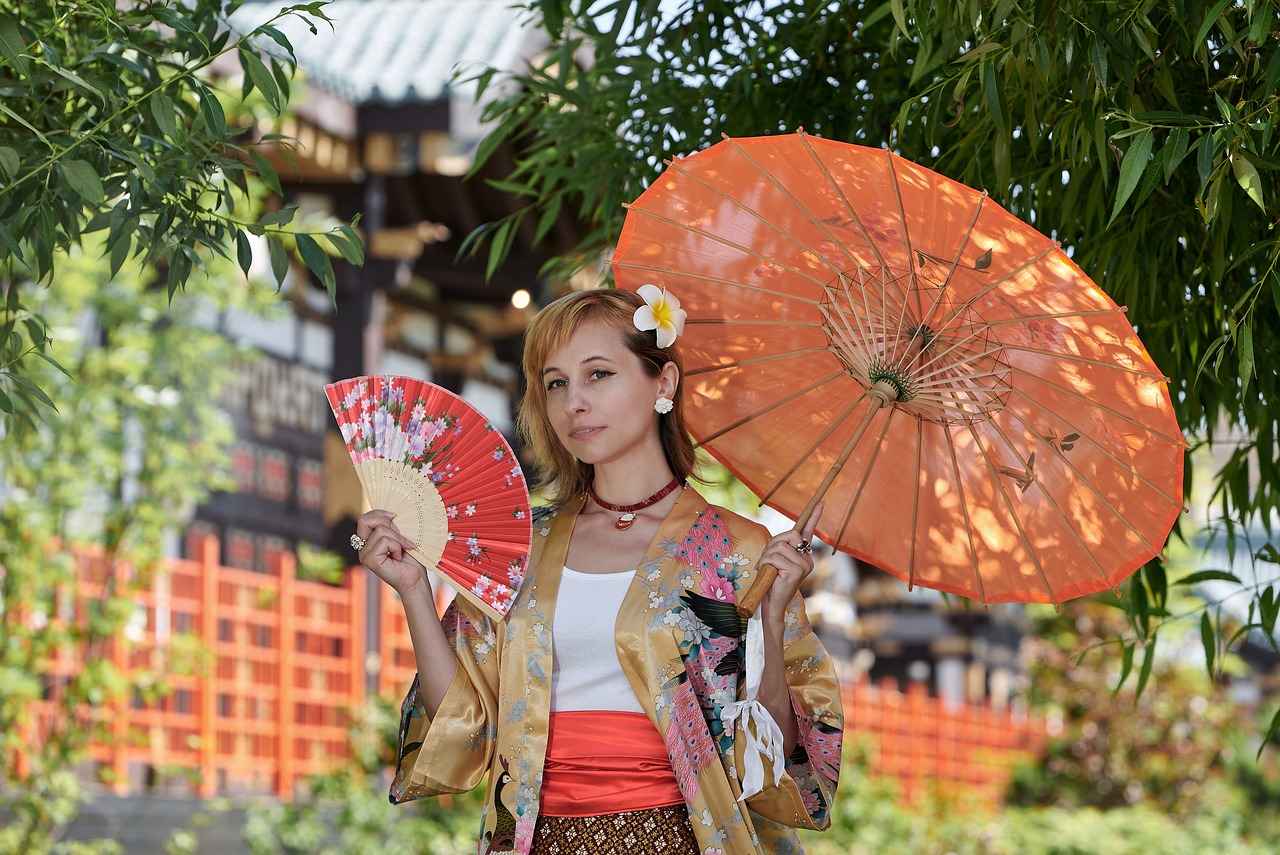
How to Wear a Kimono
Wearing a kimono is an art form that reflects the rich cultural heritage of Japan. The process involves a series of steps and specific accessories that enhance the beauty and elegance of this traditional garment. In this guide, we will outline the essential techniques and accessories needed to wear a kimono properly, ensuring that you not only look stunning but also feel comfortable.
- Preparation: Before donning a kimono, it is crucial to wear a kimono undergarment (juban) to protect the kimono from sweat and oils. This layer also provides a smooth surface for the kimono to drape over.
- Putting on the Kimono: Begin by holding the kimono with the back facing you. Slip your arms into the sleeves and pull the fabric around your body. Make sure the left side overlaps the right side, as this is essential for proper etiquette.
- Adjusting the Fit: Once the kimono is wrapped around you, adjust the length so that it falls just above your ankles. Use a koshihimo (a type of sash) to secure the kimono in place at your waist, ensuring it fits snugly but comfortably.
- Adding the Obi: The obi is a wide belt that adds structure to the kimono. Wrap it around your waist over the kimono, tying it in a decorative knot at the back. There are various styles of knots, such as the taiko knot, which is popular for formal occasions.
- Accessorizing: Complete your look with accessories like obijime (cords) and haneri (collars). These elements not only enhance the overall aesthetic but also reflect your personal style.
Final Adjustments: After dressing, make sure to check your appearance in a mirror. Adjust the kimono’s sleeves and hem as needed, ensuring that everything is aligned and looks polished. Remember, wearing a kimono is not just about the garment itself; it’s about embodying the grace and tradition that it represents.
By following these steps, you can confidently wear a kimono and appreciate its beauty and cultural significance. Whether for a special occasion or a casual outing, mastering the art of wearing a kimono will allow you to embrace this timeless tradition.
Kimono Accessories
are essential elements that elevate the overall appearance of this traditional Japanese garment. While the kimono itself is a stunning piece of art, the right accessories can transform it into a breathtaking ensemble that reflects the wearer’s personality and the occasion at hand.
- Obi: The obi is a wide belt that wraps around the waist and is perhaps the most crucial accessory in kimono fashion. It comes in various styles, colors, and materials, each serving different purposes. For instance, formal occasions often call for a more elaborately designed obi, while casual outings may allow for simpler patterns.
- Obijime: This is a decorative cord that is tied over the obi. It adds a touch of elegance and can be made from various materials, including silk or cotton. The obijime not only serves a practical purpose of securing the obi but also enhances the visual appeal of the outfit.
- Haneri: The haneri is a detachable collar worn with the kimono, typically found on the neckline. It can be made from contrasting fabric or adorned with embroidery, providing an opportunity to express individuality. The haneri not only adds a layer of sophistication but also protects the kimono from wear and tear.
- Obiage: Often overlooked, the obiage is a decorative piece of fabric tucked into the top of the obi. It can be used to introduce a splash of color or pattern, making it a versatile accessory for both formal and casual kimonos.
- Obiita: This is a stiff piece that helps maintain the shape of the obi. It ensures that the obi sits properly on the waist, contributing to the overall silhouette of the wearer.
In conclusion, accessories are not merely additions to the kimono; they are integral to achieving the perfect look. Each piece serves a specific function and contributes to the wearer’s style, making them indispensable in traditional Japanese attire. By carefully selecting and coordinating these accessories, one can create a harmonious and striking kimono ensemble that honors Japan’s rich cultural heritage.
Wearing Techniques
Putting on a kimono is an art that reflects both cultural heritage and personal style. Mastering the proper ensures that the kimono not only fits comfortably but also exudes elegance. Below, we outline the essential steps to wear a kimono correctly.
- Preparation: Before wearing the kimono, ensure you have all necessary accessories ready. These include the kimono itself, an obi (belt), obijime (cord), and haneri (collar).
- Undergarments: Start by wearing an appropriate undergarment, such as a juban, which protects the kimono from sweat and dirt.
- Putting on the Kimono:
- Slip the kimono over your shoulders, ensuring the left side overlaps the right side. This is crucial, as the opposite is reserved for dressing the deceased.
- Adjust the length of the kimono so that it sits comfortably at your ankles.
- Securing the Kimono: Use the obi to secure the kimono in place. Wrap it around your waist and tie it in a bow at the back. Make sure it is snug but not too tight to allow for ease of movement.
- Final Adjustments: Check for any wrinkles or misalignments. Smooth out the fabric and ensure the sleeves fall gracefully.
By following these steps, you can wear a kimono that is not only comfortable but also visually stunning. Remember, the key to achieving a beautiful look lies in the details and the way you carry yourself.
Conclusion: Understanding and practicing the proper wearing techniques of a kimono enhances not only your comfort but also the garment’s aesthetic appeal. With practice, you can master this traditional attire and appreciate its cultural significance even more.
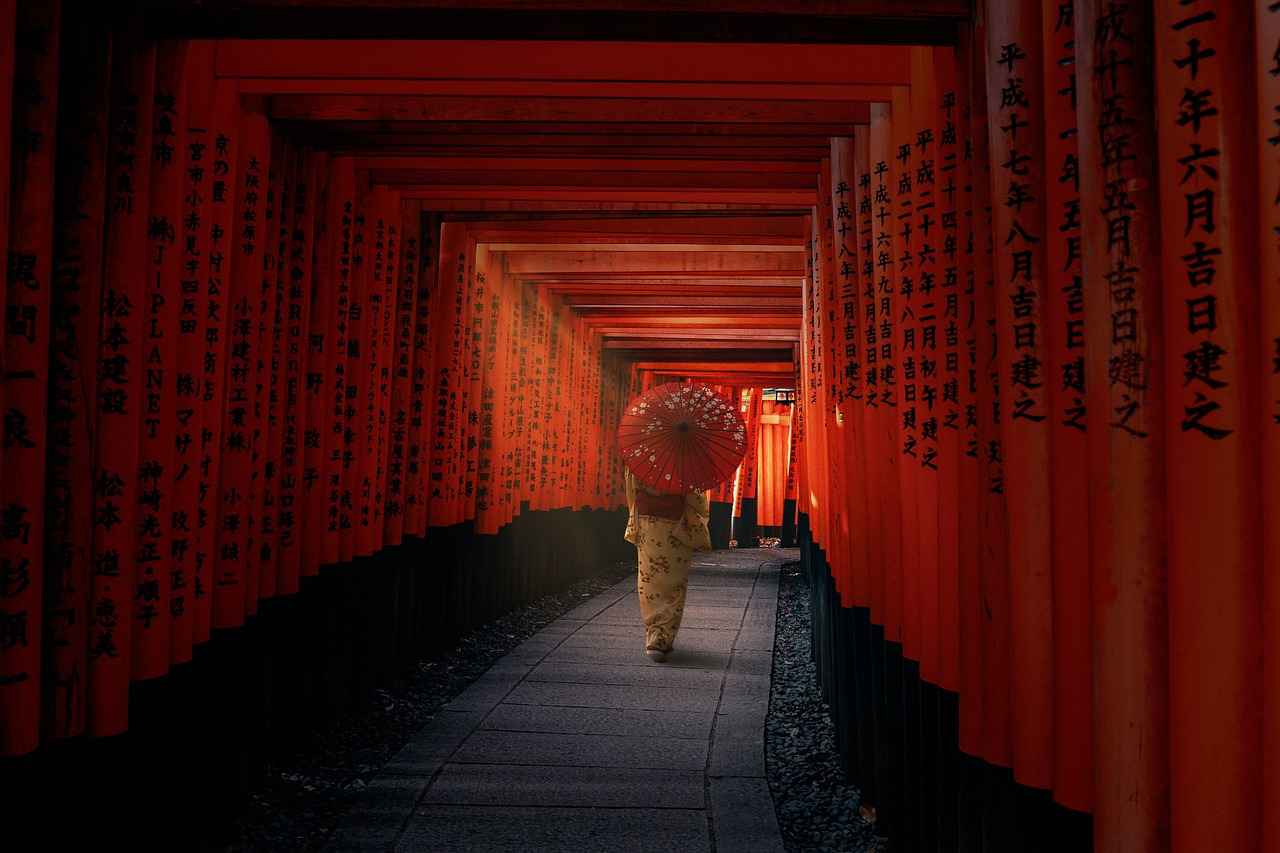
The Cultural Significance of Kimono
The kimono is not just a garment; it is a profound representation of Japanese culture, embodying centuries of tradition, identity, and social status. Its significance extends beyond mere aesthetics, serving as a powerful symbol of the values and history that define Japan.
Historically, the kimono has been worn by individuals across all social strata, but its design and fabric often indicated the wearer’s social standing. For instance, during the Edo period, the use of luxurious fabrics like silk and intricate patterns was reserved for the elite, while simpler designs were worn by the common folk. This distinction has evolved, yet the kimono continues to reflect a deep connection to one’s heritage and family.
In contemporary society, the kimono has become a symbol of cultural pride. Many Japanese people wear kimonos during significant events such as weddings, festivals, and ceremonies, reaffirming their cultural identity. The act of wearing a kimono is often accompanied by rituals and practices that enhance its significance, such as the careful selection of colors and patterns that correspond to the occasion and the wearer’s age.
Moreover, the kimono is a canvas for artistic expression, showcasing the exquisite craftsmanship of Japanese artisans. Each kimono is often hand-painted or dyed using traditional techniques, making it a unique piece of art. This craftsmanship not only preserves ancient techniques but also fosters a sense of continuity and connection to the past.
As Japan continues to modernize, the kimono adapts while retaining its cultural essence. Designers are now blending traditional elements with contemporary fashion, making the kimono accessible to younger generations. This evolution signifies that while the kimono is rooted in history, it is also a living garment that evolves with society.
In conclusion, understanding the cultural significance of the kimono enhances our appreciation for this beautiful garment. It is a testament to Japan’s rich history and a reflection of its enduring values. By embracing the kimono, individuals not only honor their heritage but also contribute to the ongoing narrative of Japanese culture.
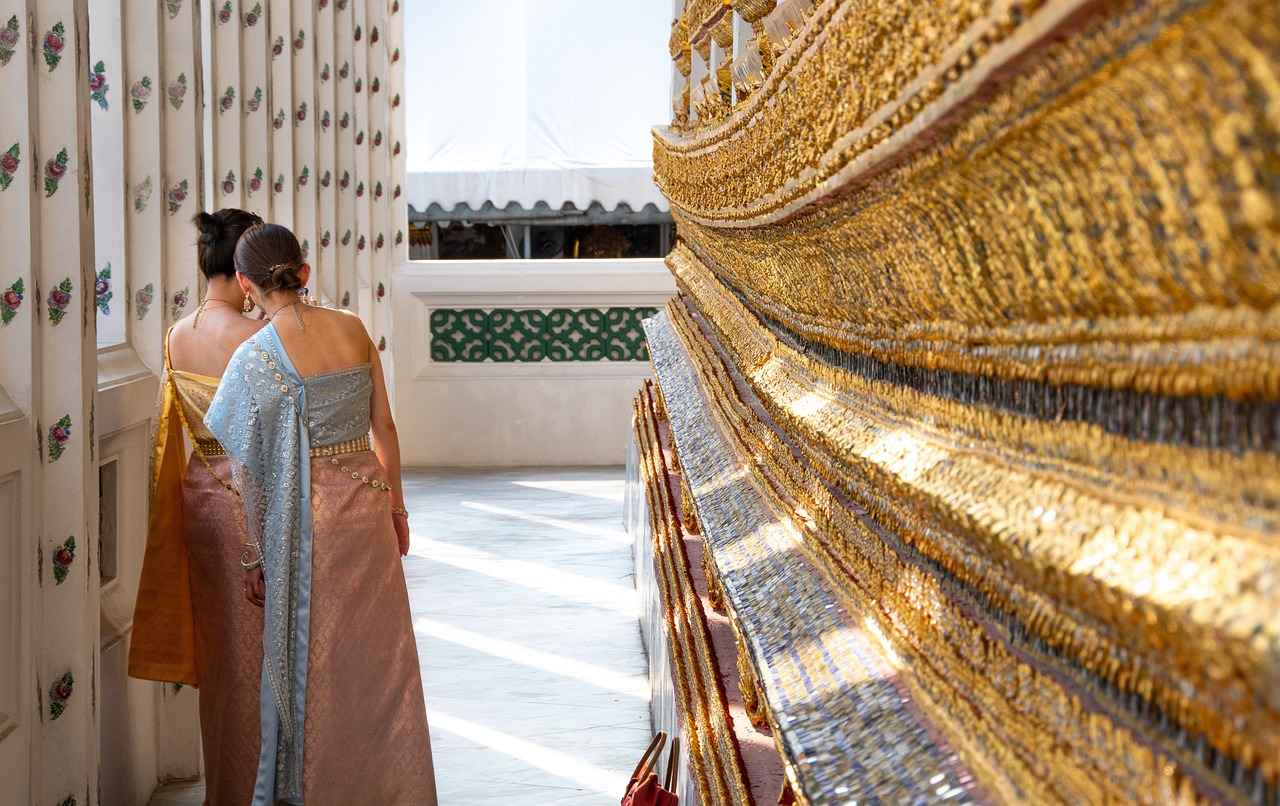
Modern Adaptations of Kimono
In recent years, the kimono has experienced a remarkable resurgence in popularity, transcending its traditional boundaries to become a staple in contemporary fashion. This evolution is not merely a trend; it reflects a deep appreciation for cultural heritage while embracing modern aesthetics. Designers worldwide are reinterpreting this iconic garment, blending its rich history with innovative styles.
One significant aspect of this adaptation is the incorporation of modern fabrics and techniques. While traditional kimonos are predominantly made from silk, contemporary designers are experimenting with materials like denim, cotton blends, and even sustainable fabrics. This shift not only makes the kimono more accessible but also caters to a broader audience seeking comfort and versatility.
Moreover, the silhouette of the kimono is being reimagined. Traditional kimonos feature a loose fit and wide sleeves, but modern interpretations often introduce tailored cuts and asymmetrical designs. These changes allow for a more flattering fit, appealing to younger generations who desire both style and comfort.
Additionally, the color palettes and patterns are evolving. While classic kimonos often showcase intricate, vibrant designs, contemporary versions may feature minimalist aesthetics or bold, graphic prints. This fusion of old and new not only attracts fashion enthusiasts but also promotes cultural exchange and appreciation.
Accessories play a crucial role in modern kimono styling as well. Designers are pairing kimonos with streetwear elements such as sneakers, oversized bags, and layered outfits, creating a unique blend of traditional and urban fashion. This approach encourages individuals to express their personal style while honoring the kimono’s cultural significance.
In conclusion, the modern adaptations of the kimono highlight its versatility and enduring appeal. By embracing new materials, silhouettes, and styling techniques, contemporary designers are ensuring that this traditional garment remains relevant in today’s fashion landscape. As the kimono continues to evolve, it serves as a beautiful reminder of Japan’s rich cultural heritage, inviting everyone to celebrate its legacy.
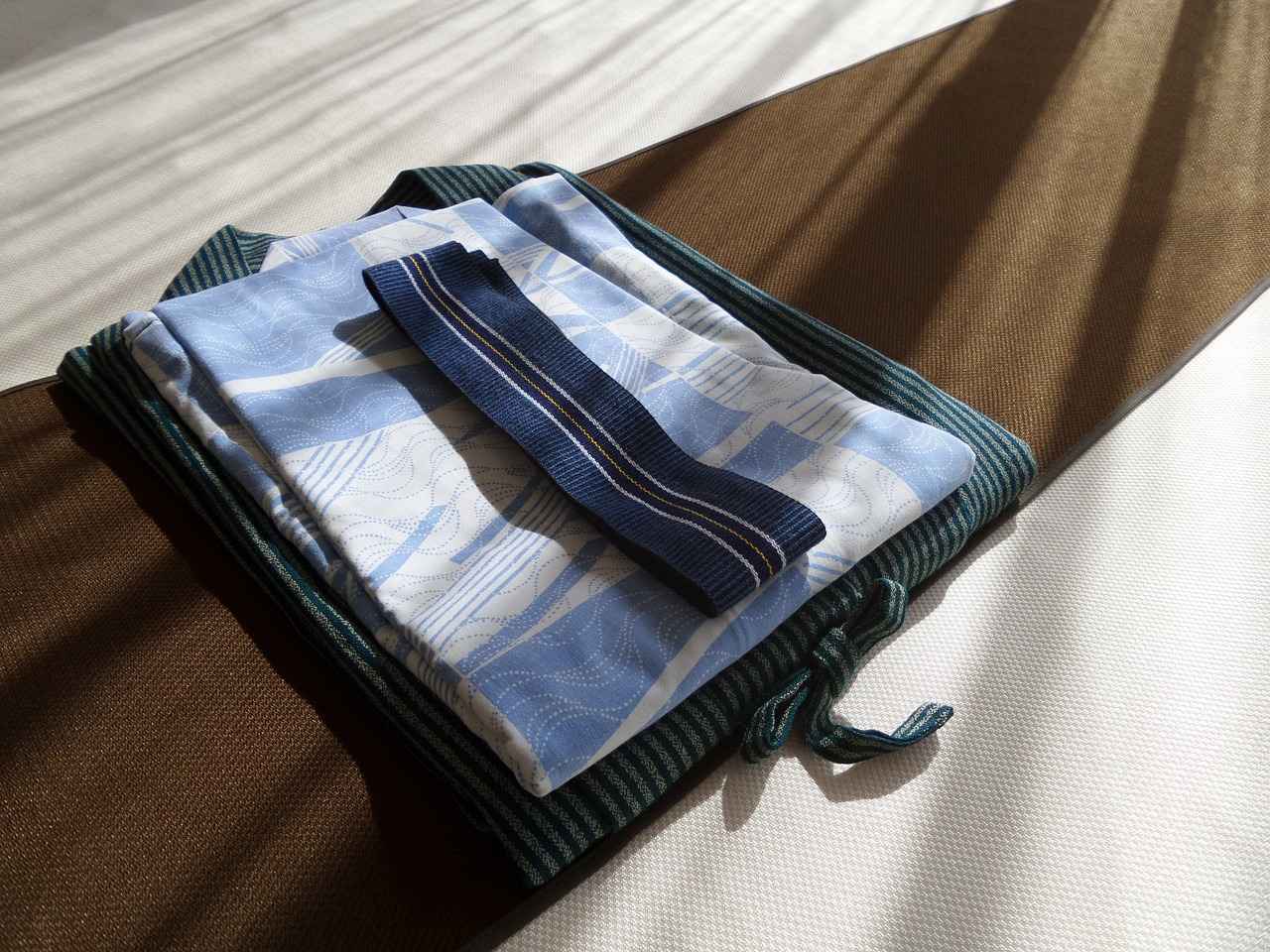
Conclusion: Embracing the Kimono Today
The kimono remains a powerful symbol of Japanese culture, seamlessly blending tradition with modernity. This iconic garment has transcended its historical roots to become a vital part of contemporary fashion, reflecting not only the rich heritage of Japan but also the evolving tastes of modern society.
Understanding the significance of the kimono involves exploring its intricate designs, cultural meanings, and various styles. Each kimono tells a story, often linked to the wearer’s age, marital status, and the occasion for which it is worn. The vibrant colors and patterns are not merely aesthetic; they carry deep cultural significance and convey messages about the wearer’s identity.
In recent years, the kimono has seen a resurgence in popularity, with fashion designers incorporating its elements into modern attire. This revival showcases how traditional garments can adapt to contemporary lifestyles while preserving their essence. For instance, many young people now wear kimonos for casual outings, festivals, and even as everyday fashion statements, demonstrating a beautiful fusion of past and present.
Moreover, the kimono’s versatility is evident in its various styles, from the formal furisode to the casual yukata. Each type serves a different purpose, allowing individuals to express their personality and cultural pride. The kimono is not just clothing; it is a canvas for artistic expression, embodying the spirit of Japan.
In conclusion, by understanding the significance and styles of the kimono, one can truly appreciate this timeless garment and its evolving role in contemporary fashion. The kimono is a symbol of resilience and adaptation, reminding us of the importance of preserving cultural heritage while embracing the future.
Frequently Asked Questions
- What is a kimono?
A kimono is a traditional Japanese garment characterized by its long sleeves and wrap-around design. It has a rich history and is often worn on special occasions, showcasing Japan’s unique culture and artistry.
- What are the different types of kimono?
Kimonos come in various styles, including formal types like furisode for young unmarried women and tomosode for married women, as well as casual varieties for everyday wear. Each type serves specific purposes and occasions.
- How do you wear a kimono properly?
Wearing a kimono involves several steps, including putting on the garment correctly, using accessories like obi (belts) and obijime (cords), and ensuring the fit is comfortable yet elegant. It’s essential to follow traditional techniques for the best look.
- What materials are kimonos made from?
Kimonos can be crafted from various materials, with silk being the most luxurious and often used for formal occasions. Cotton is popular for casual wear due to its comfort and breathability, especially during summer festivals.
- What is the cultural significance of the kimono?
The kimono is more than just clothing; it represents tradition, identity, and social status in Japan. Understanding its cultural importance enhances appreciation for this beautiful garment and its role in Japanese society.






